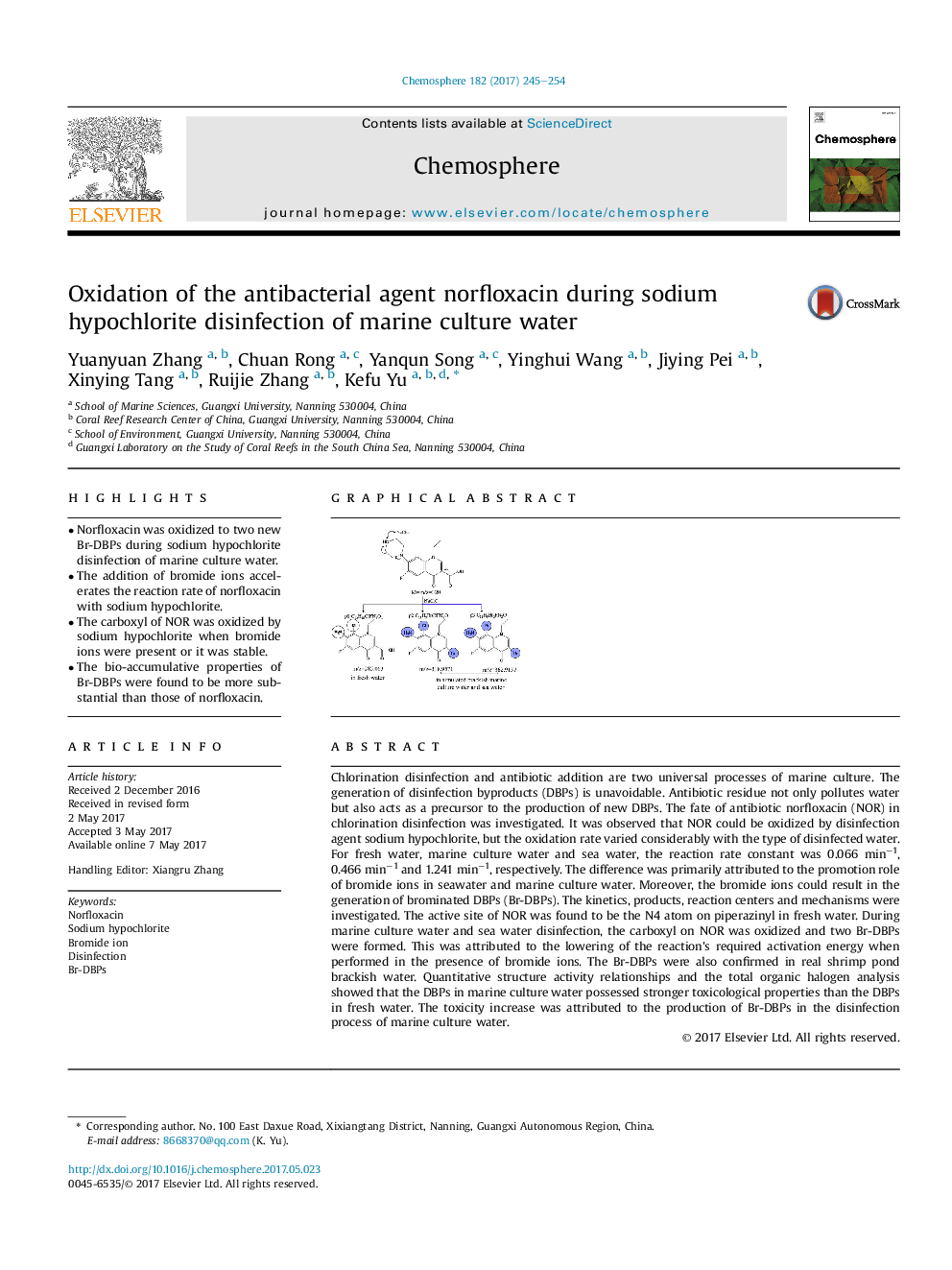| کد مقاله | کد نشریه | سال انتشار | مقاله انگلیسی | نسخه تمام متن |
|---|---|---|---|---|
| 5746946 | 1618789 | 2017 | 10 صفحه PDF | دانلود رایگان |
- Norfloxacin was oxidized to two new Br-DBPs during sodium hypochlorite disinfection of marine culture water.
- The addition of bromide ions accelerates the reaction rate of norfloxacin with sodium hypochlorite.
- The carboxyl of NOR was oxidized by sodium hypochlorite when bromide ions were present or it was stable.
- The bio-accumulative properties of Br-DBPs were found to be more substantial than those of norfloxacin.
Chlorination disinfection and antibiotic addition are two universal processes of marine culture. The generation of disinfection byproducts (DBPs) is unavoidable. Antibiotic residue not only pollutes water but also acts as a precursor to the production of new DBPs. The fate of antibiotic norfloxacin (NOR) in chlorination disinfection was investigated. It was observed that NOR could be oxidized by disinfection agent sodium hypochlorite, but the oxidation rate varied considerably with the type of disinfected water. For fresh water, marine culture water and sea water, the reaction rate constant was 0.066Â minâ1, 0.466Â minâ1 and 1.241Â minâ1, respectively. The difference was primarily attributed to the promotion role of bromide ions in seawater and marine culture water. Moreover, the bromide ions could result in the generation of brominated DBPs (Br-DBPs). The kinetics, products, reaction centers and mechanisms were investigated. The active site of NOR was found to be the N4 atom on piperazinyl in fresh water. During marine culture water and sea water disinfection, the carboxyl on NOR was oxidized and two Br-DBPs were formed. This was attributed to the lowering of the reaction's required activation energy when performed in the presence of bromide ions. The Br-DBPs were also confirmed in real shrimp pond brackish water. Quantitative structure activity relationships and the total organic halogen analysis showed that the DBPs in marine culture water possessed stronger toxicological properties than the DBPs in fresh water. The toxicity increase was attributed to the production of Br-DBPs in the disinfection process of marine culture water.
154
Journal: Chemosphere - Volume 182, September 2017, Pages 245-254
